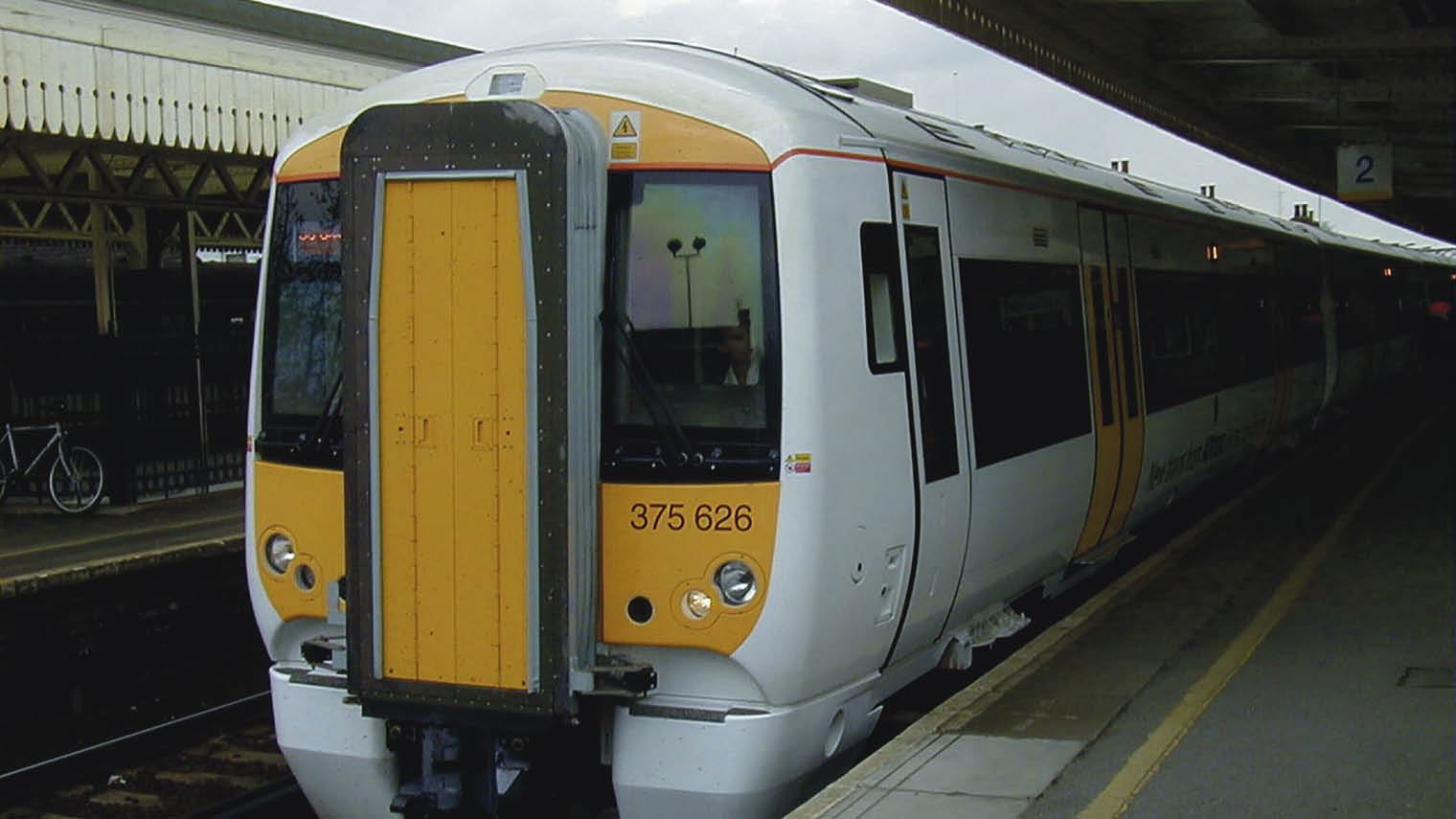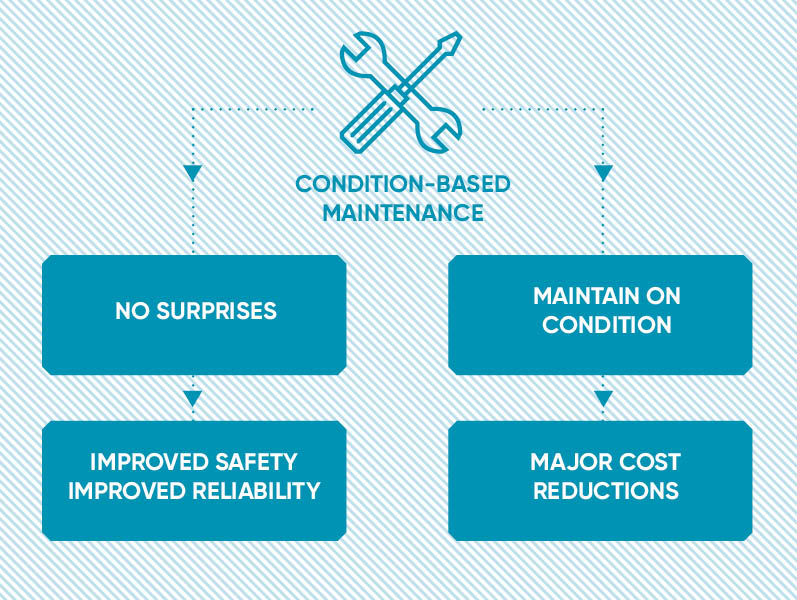Even a casual glance at recent newspaper headlines reveals how pressures on the UK rail network are increasing. Office of Rail and Road figures show the number of passenger journeys on franchised rail services in Britain increased by 69.5 per cent between 2002 and 2015. Meanwhile, train companies are under growing pressure to manage costs, increase reliability and ensure they get maximum usage out of all of their assets.
Modern trains are complex pieces of equipment and even a small fault can bring them, and a large part of the entire network, to a grinding halt.
Most current rail maintenance regimes are mileage or time based, which means maintenance is done regardless of condition, resulting in both massive waste and unpredictable breakdowns. With condition monitoring, train operators can do maintenance only when necessary. They’re not risking being caught out because damage is reported in real time before it causes danger or delays. In other words, they get no surprises.
Now innovative British company Perpetuum has developed and implemented a new technology that can exploit a key feature of the industrial internet of things (IIoT) to provide this kind of constant, real-time “in-flight” monitoring and diagnostics. An approach that’s already commonplace in aircraft can now be transferred to trains.
“It means that the train operators don’t have any unpleasant surprises caused by key pieces of equipment failing or wearing out unexpectedly because the system predicts outages,” explains Dr Steve Turley, chief executive of Perpetuum, a business which was spun out of Southampton University and has developed award-winning, self-powered monitoring systems for both rolling stock and track.
An exceptionally important feature of the system is that it uses the vibrations in the train to generate enough power for the sensors, microprocessors and wireless transmitters. So it’s very simple, low cost and quick to install in minutes with just a few bolts.
Perpetuum has shipped many thousands of its sensors globally and its clients already include six UK rail operators. It has three elsewhere in Europe, three in North America and one in Australia, with many more globally placing orders.
We’re using the vibration to power the smart monitoring of that vibration
As Dr Turley explains, if a train operator is constantly kept informed about the trains’ condition, it can identify and plan any maintenance requirements ahead of time. The system monitors key components such as wheels, bearings, gearboxes and now the track itself. As a result, “in-service” failures can be more or less eliminated leading to better safety and reliability, and lower maintenance costs for trains and track.
It gives operators the ability to do what Perpetuum describes as “maintain on condition”. Dr Turley says: “If the maintenance team of a train operator knows what condition a train is in, they don’t waste time and money putting it through an unnecessary upkeep and repair programme. ‘Condition-based maintenance’ means that trains spend more time on the track, improved customer service and increased profitability of the train operator.”
This “intelligent train,” overcomes another key challenge facing train operators of balancing essential safety requirements with the need to remain commercially viable. Now they can improve both as one leads to the other.
Key to Perpetuum’s success is its expertise in vibration engineering. “We’re using the vibration to power the smart monitoring of that vibration. Vibration is something that happens naturally with trains, but we’ve developed technologies that can take this hitherto ignored by-product of a moving train bogie and use it to develop valuable, actionable information,” explains Dr Turley.
For example, if a defect is developing in a physical system such as a train, it will create a specific vibration signature, which Perpetuum’s technology can identify and isolate from all the other vibration going on in the background. The company calls this “information from vibration”.
Exploiting the IIoT’s key features of connectivity and reduced need for human intervention, this data is turned into clear actionable information about the “health” of the train on a daily basis by Perpetuum’s software algorithms, which alert train operators of impending problems many months in advance. “As a result of this very early warning, we’ve never had a failure in service for the components that it monitors,” says Justin Southcombe, Perpetuum’s commercial director.

Southeastern has deployed the Perpetuum system across a number of fleets since it pioneered theinnovation five years ago
Perpetuum is unique among players in this sector in that it’s vertically integrated. “Most IIoT developers extract information from other people’s data, but we have the hardware – that’s sensors – plus the communications, software, algorithms and the information display. This knowledge of the complete systems means we can deliver better information in a more co-ordinated, more cost-effective manner,” he says.
Another aspect of Perpetuum’s technology that appeals to its customers is that its patented sensor nodes are powered by the company’s proprietary energy harvesters, which convert the ambient vibration from a train into electrical energy, known as “power from vibration”. The absence of batteries and their issues of replacement and disposal make the sensor nodes more environmentally friendly. Customers love this approach as it makes the sensor system very easy and fast to install without wiring, and the system maintenance free.
“All communications are completely wireless. Wires aren’t a good mix with bogies because they get in the way and can become disconnected because of vibration. That means the signal becomes an intermittent and unreliable data source. People like the fact that what we offer really is a ‘fit-and-forget’ self-contained solution,” says Mr Southcombe.
With all these advantages for cost-saving, increased reliability and safety, plus improved green credentials that Perpetuum is already delivering for its customers, it’s not surprising that more and more rail operators around the world are selecting Perpetuum’s groundbreaking vibration condition monitoring system. IIoT benefits are best achieved with sensors that are self-powered. Perpetuum achieves this and does it on a mobile platform.
For more information please visit perpetuum.com

